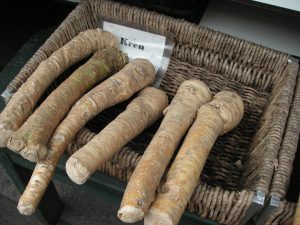Creating a vibrant shade garden in Zone 7—a climate characterized by mild winters and warm summers—can breathe life into your landscape. Not only does a shade garden provide a tranquil retreat, but it also showcases an array of stunning plants that thrive under canopy trees, against northern-facing walls, or in other areas that receive minimal sunlight.
This guide will introduce you to some of the most beautiful and versatile plants you can incorporate into your shade garden, offering insights into their caring requirements and aesthetic qualities.
Bird-in-a-Bush
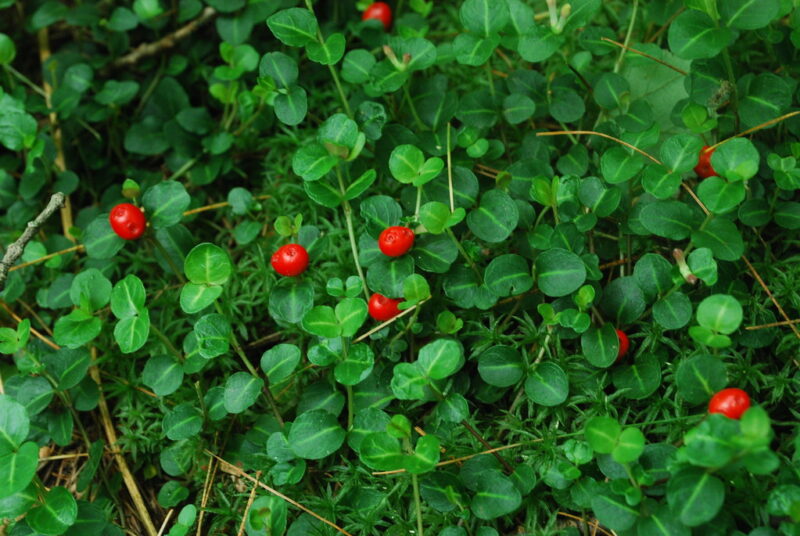
Bird-in-a-Bush, also known as Mitchella repens, is a delightful groundcover that offers year-round interest in the garden. This evergreen plant produces small white flowers in the spring, followed by red berries that persist through winter, attracting birds to your garden—hence the name! It thrives in moist, well-drained soil and prefers partial to full shade, making it an ideal choice for shaded woodland areas.
Bird-in-a-Bush not only enhances the garden aesthetically but is also excellent for soil stabilization and reducing erosion due to its sprawling growth habit. It is quite low maintenance; just avoid overly dry environments. When you plant it, ensure enough space for it to spread comfortably; its creeping nature allows it to fill gaps and provide a lush green appearance year-round.
Coral Bells
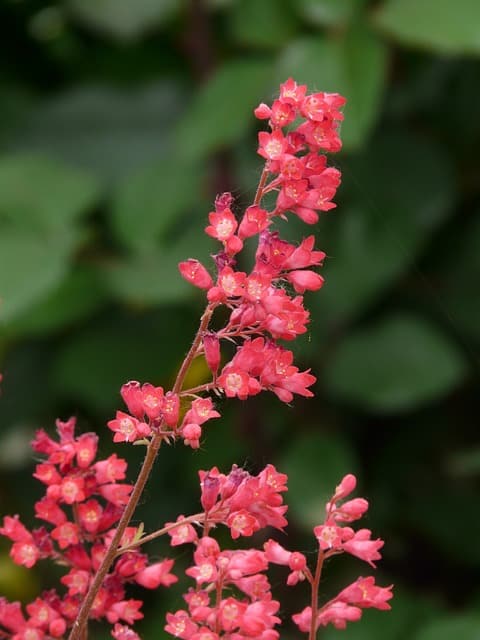
Next on our list is Coral Bells (Heuchera spp.), a perennial beloved for its stunning foliage and delicate flowers. This plant comes in various colors, including burgundy, lime green, and silver, making it an eye-catching addition to any garden. Coral Bells thrive in well-draining soil with a preference for partial shade, allowing them to flourish and retain their vibrant colors.
When planting Coral Bells, it’s important to consider companion plants. Their low height—usually spanning 1 to 2 feet—makes them perfect for border planting or as a filler in larger pots alongside taller plants. Coral Bells are fairly drought-tolerant once established but will benefit from occasional watering during dry spells. Their tiny, bell-shaped flowers are most prominent in late spring to early summer, creating a soft, airy presence in your shade garden.
False Goat’s Beard
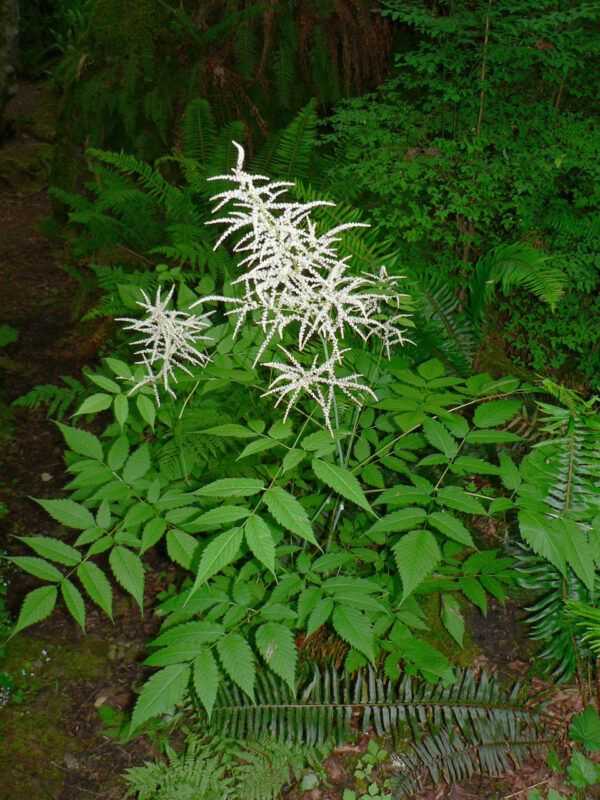
False Goat’s Beard, also known as Aruncus dioicus, is a robust perennial that adds architectural interest to shade gardens through its tall spikes of fluffy, creamy-white flowers. Reaching heights of 3 to 6 feet, this plant is perfect for the back of the garden bed. It prefers moist, well-drained soil with a preference for partial to full shade, making it well-suited for the lush, slightly damp conditions often found beneath tree canopies.
Beyond its impressive height, False Goat’s Beard produces attractive, fern-like foliage that offers texture and contrast to surrounding plants. This perennial blooms in late spring to early summer, creating a striking display that can last through summer if spent flowers are removed. It serves as an ideal backdrop for smaller shade-tolerant flowers and can be a focal point in a larger landscaping scheme.
Fern-Leaf Bleeding Heart
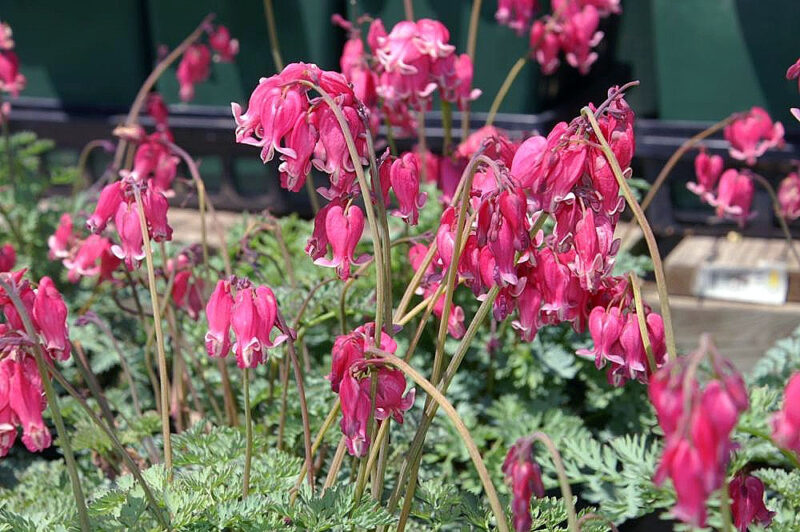
Known scientifically as Dicentra eximia, the Fern-Leaf Bleeding Heart is a stunning perennial that flourishes in shaded areas. Its delicate, feathery leaves complement lovely, heart-shaped pink flowers that dangle gracefully above the foliage, resembling a nod to love and affection.
This plant thrives in consistently moist, well-drained soil with dappled shade. It tends to attract pollinators like bees and butterflies, which adds life to your serene garden spot. Fern-Leaf Bleeding Heart blooms from late spring to early summer. Importantly, it is a short-lived perennial, so consider adding companions that will fill in the gaps when its blooms fade.
Foxglove
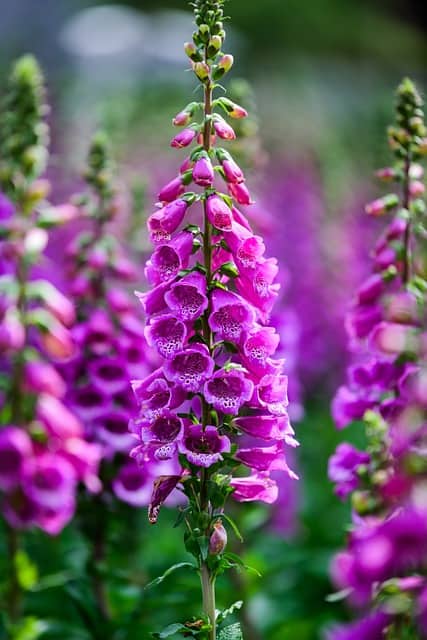
Foxglove, or Digitalis purpurea, is a dramatic tall flower that can thrive in a bit of shade, making it a striking choice for gardeners looking to make a statement. Known for its tubular flowers, which can come in shades of purple, pink, and white, Foxglove reaches heights between 2 and 5 feet, depending on the variety.
This biennial or short-lived perennial prefers moist, well-drained soils and partial shade, especially in the hot summer months. While it might attract hummingbirds and bees drawn to its long nectar-filled flowers, it’s essential to exercise caution with Foxglove as it is toxic if ingested. This makes it best suited for gardens that are not frequented by pets or small children. Its striking appearance in late spring to early summer is definitely worth it for a gardener looking to add a pop of color and height.
Ground Orchid
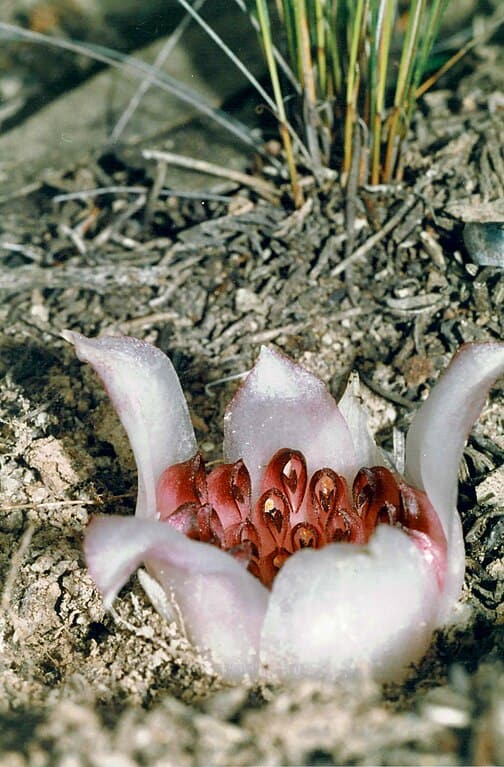
For an exotic flair, consider adding a Ground Orchid (Ophrys spp.). These hardy perennials boast striking, tropical-looking flowers that blossom in late spring and summer. Ideal for shady areas with rich, well-drained soil, Ground Orchids provide unique visual interest and can be loved by novice gardeners due to their relatively low maintenance.
They are perfect for underplanting around larger shrubs or trees. Ground Orchids can spread over time, offering a lovely carpet of foliage and flowers that adds depth and color. They also don’t require much in terms of watering, as they prefer slightly dryer conditions once established. Regular deadheading can promote more blooms, enhancing their beauty throughout the garden month after month.
Hellebore
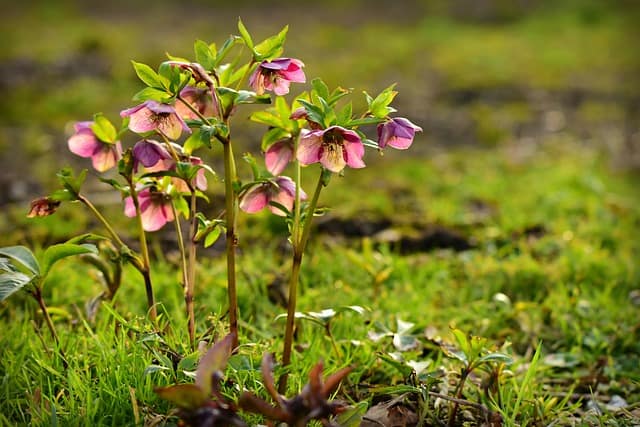
A true gem for shade gardens is Hellebore, commonly known as the Lenten rose. With their classic cup-shaped blooms that emerge in late winter or early spring, Hellebores are among the first flowers to grace the garden after a long winter. Their stunning array of colors—from deep purples to soft whites—adds elegance to shaded ground.
Hellebores thrive in rich, well-draining soil but are quite adaptable, making them excellent for beginners. They prefer good moisture and can tolerate dry spells but thrive with consistent watering. Plant them towards the front or middle of your shade garden to ensure their exquisite blossoms are easily seen. Additionally, their evergreen leaves provide year-round interest, further enhancing your garden design.
Hostas
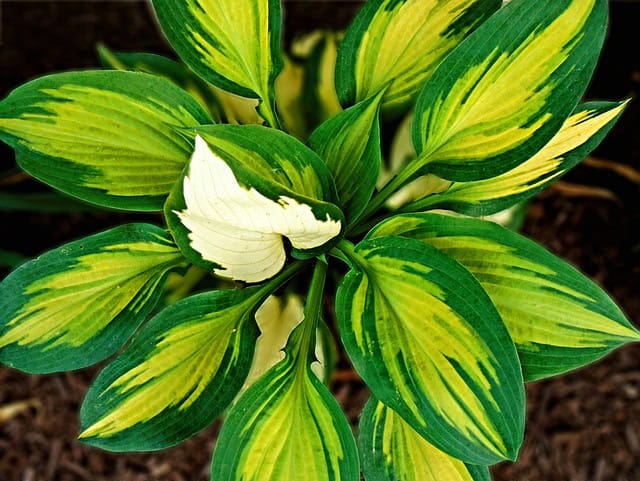
No shade garden would be complete without Hostas. These popular perennials are known for their large, lush leaves and architectural shapes. With an incredible variety of sizes and colors—from deep greens to variegated creams—Hostas can brighten dark corners in your garden and act as the backdrop for smaller flowering plants.
Hostas love rich, moist, well-drained soil and thrive in partial to full shade. Consider planting different sizes of Hostas together for a dynamic effect; some varieties can grow to heights of up to 3 feet, while others stay compact and low to the ground. Hostas also produce lovely flower spikes in midsummer. However, it’s the foliage that usually captures the spotlight, providing textural interest and a soft, green aesthetic.
Hydrangea
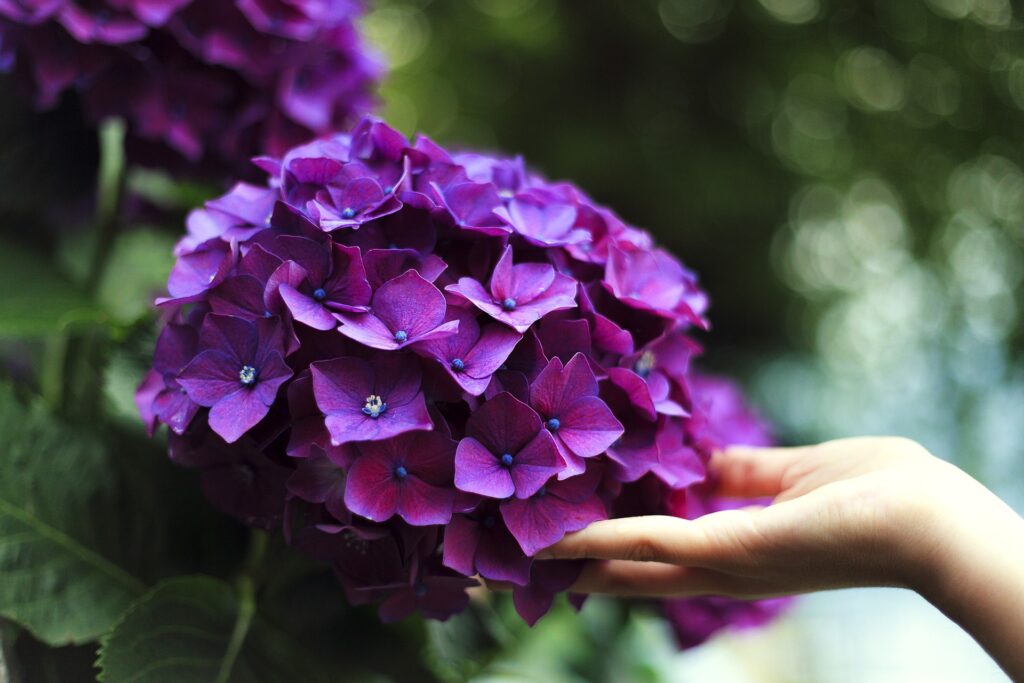
Hydrangea is a classic shade garden plant, notable for its lush foliage and large, showy flower clusters. Commonly, Hydrangea macrophylla, or mophead hydrangeas, are preferred for their brilliant blue to pink blooms that depend on soil acidity. They thrive in rich, well-drained soil and prefer part shade to full shade environments.
These plants are relatively low-maintenance, needing only a bit of pruning in late winter or early spring to keep their shape. With regular watering, especially during dry spells, Hydrangeas will reward you with stunning blooms throughout the summer. Their height can range from 2 to 6 feet, allowing them to serve as either a centerpiece in your garden or a vibrant hedge plant in a shaded walkway.
Japanese Anemone
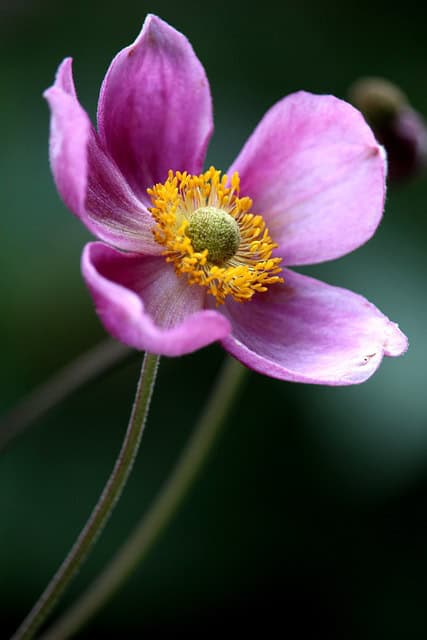
For an airier look in a shade garden, Japanese Anemone (Anemone hupehensis) creates a beautiful display with its delicate flowers. Blooms emerge in late summer and continue into early fall, providing an essential later-season color boost when many other flowers have faded. Available in charming shades of white, pink, and purple, these perennials flourish in well-draining soil and prefer partial shade.
Japanese Anemones can spread well, so it’s wise to plant them in clusters to create a natural look. With a height of 2 to 4 feet, they create soft, flowing lines that dance with the breeze, adding movement to your garden design. As they attract butterflies, you will notice more lively activity as these charming blooms open.
Japanese Painted Fern
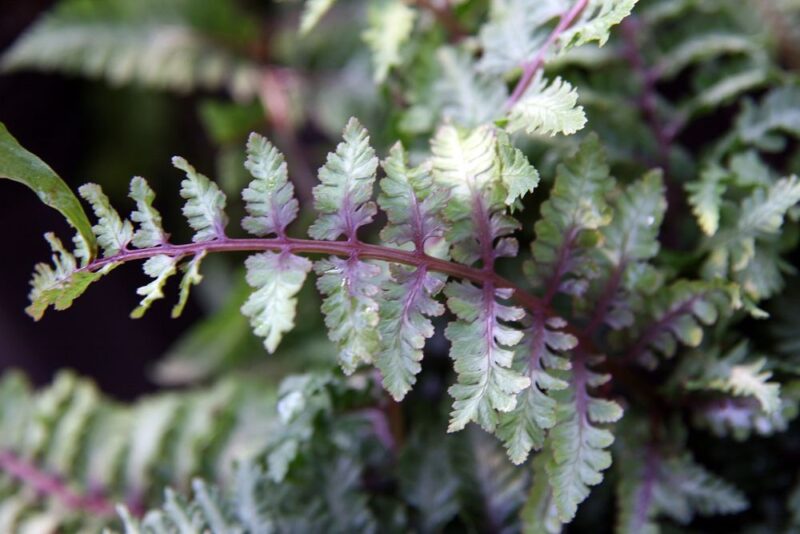
When it comes to beautiful ferns, the Japanese Painted Fern (Athyrium niponicum), with its striking silvery-green fronds and purple tones, stands out magnificently in shade gardens. This plant prefers moist, well-drained soil, flourishing beautifully in dappled or deep shade environments.
A low-maintenance plant, the Japanese Painted Fern takes minimal care while offering immense aesthetic value. Its delicate, lacy fronds create intricate textures in your garden, perfect for contrasting with broader-leafed plants. Incorporating these ferns in mixed compositions adds depth and a pop of color, making it an excellent choice for beginners looking to enhance their landscape.
Leopard Plant
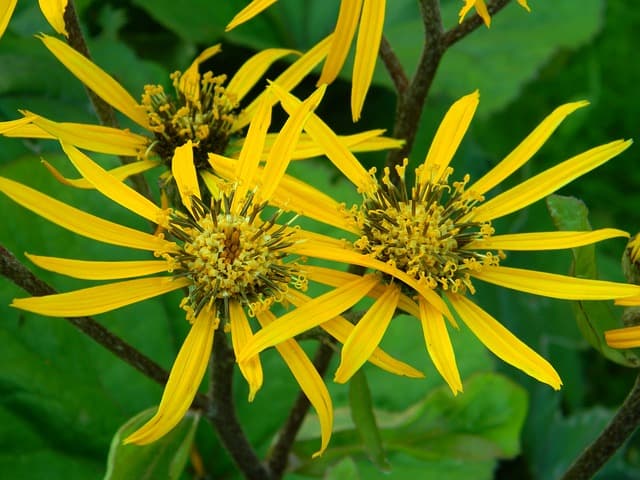
The Leopard Plant (Farfugium japonicum) is perfect for those seeking a bold foliage option for shade. With large, glossy leaves splattered with yellow spots, this perennial adds a unique visual element that stands out even in low-light conditions.
Leopard Plants thrive in rich, moist, well-drained soil and can tolerate various light conditions but prefer partial shade. They bloom in late summer, sending up bright yellow flower stalks that can reach over 3 feet tall. Incorporating these plants lends a tropical feel to your shade garden, making your space feel lush and vibrant.
Lily-of-the-Valley

Lily-of-the-Valley (Convallaria majalis) is a classic ground-cover plant, enchanting with its sweetly scented, bell-shaped white flowers. Ideal for spreading in shady areas, it thrives in well-drained, moist soil. Its rich green foliage provides a lush carpet during the growing season.
These perennials are often seen growing as ground cover in wooded areas, offering a fragrant sensation in spring. With its low growing habit reaching only about 6 to 12 inches, Lily-of-the-Valley can fill spaces beneath taller plants while its delicate flowers brighten up shadowy corners. It is important to note that this plant can be invasive, so proper maintenance is crucial to keep it contained.
Lungwort
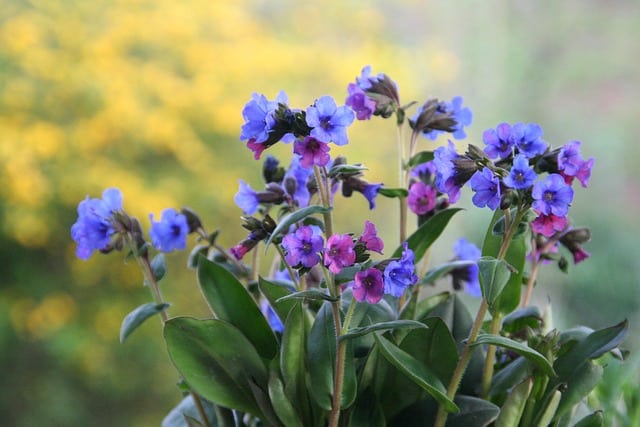
Lungwort (Pulmonaria spp.) is a spring-blooming perennial known for its spotted leaves and charming blue or pink flowers. Well-suited for shade, Lungwort thrives in moist, well-drained soil and can handle dry conditions once established.
This low-growing plant typically reaches heights of around 1 foot, making it perfect for ground cover or edging around shady borders. Lungwort’s unique foliage, which can show lovely silver markings, adds year-round interest. Early blooms will attract pollinators, and as they mature, they thrive in combination with spring-flowering bulbs.
Rhododendron
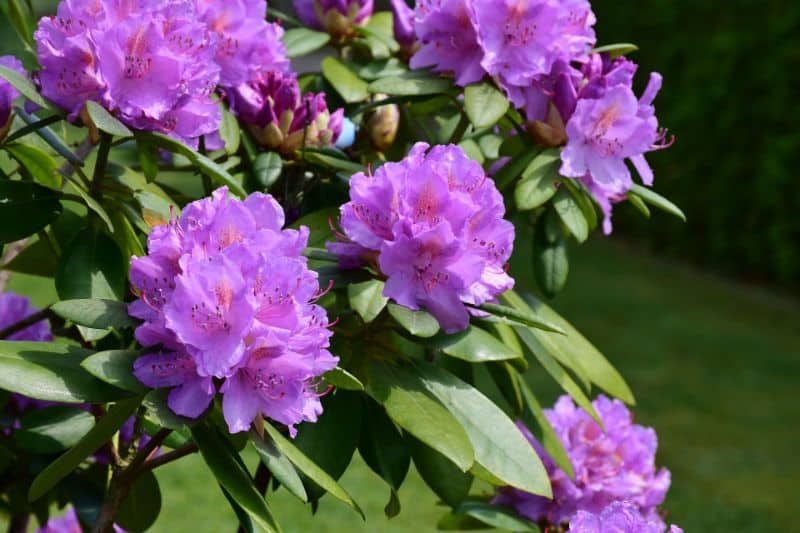
For a burst of color and structure in shaded areas, Rhododendron is an excellent choice. These shrubs boast spectacular flowers in various hues, including pink, purple, white, and red, blooming in spring. To thrive, Rhododendrons require acidic, well-drained soil and thrive in partial to indirect sunlight.
Choose from dwarf varieties to larger specimens based on your garden size. They can grow anywhere from 2 to 10 feet tall and will create a beautiful backdrop within your shade garden. When planted in clusters, these flowering shrubs provide a striking display and also attract butterflies and birds, adding vibrancy and life to your nurturing habitat.
Siberian Bugloss
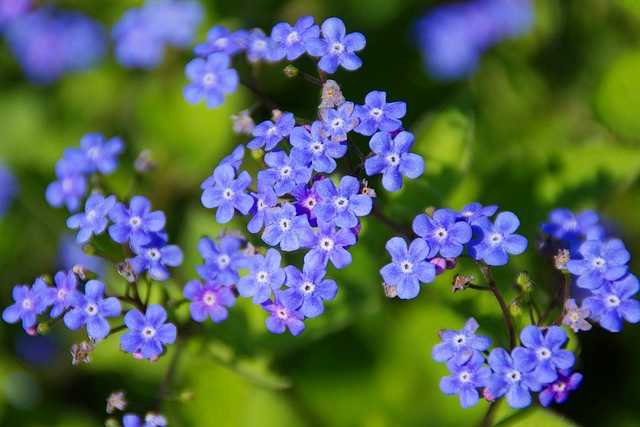
Siberian Bugloss, or Brunnera macrophylla, is an exceptional shade-loving perennial known for its heart-shaped leaves and striking blue flowers, resembling Forget-Me-Nots. It thrives preferably in rich, well-draining soil with plenty of moisture, making it a fantastic addition to shaded garden patches.
The plant reaches heights of about 1 to 2 feet and expands horizontally, providing great ground cover. Its blooms, which appear in mid-spring, attract pollinators, enhancing the appeal of your garden. Consider using Siberian Bugloss around trees, in borders, or in combination with taller plants to achieve a layered effect in your shade garden design.
Spiderwort
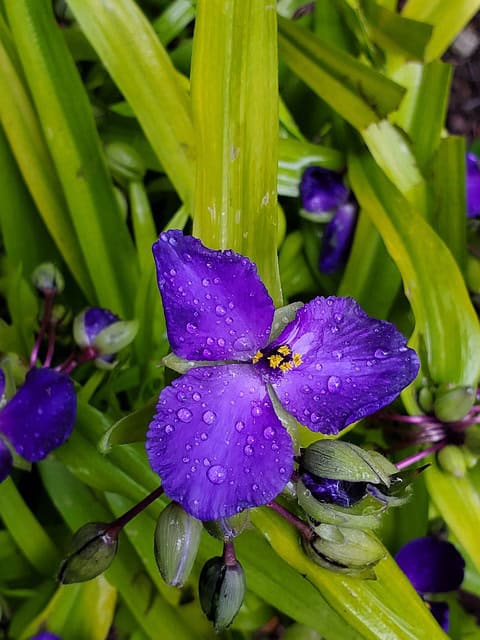
Spiderwort (Tradescantia spp.) is a colorful perennial that adds vibrancy to shade gardens. With its unique, strap-like leaves and colorful flowers in purple, blue, or pink blooms, Spiderwort prefers well-drained soil and thrives in partial to full shade.
Usually reaching heights of 1 to 3 feet, this plant can provide a delightful splash of color, especially during late spring and early summer. Spiderwort is relatively easy to care for; ensuring well-drained soil is key, as it can be susceptible to rot in overly wet conditions. With regular deadheading of spent flowers, you can encourage continued blooming and ensure the plant remains tidy and attractive throughout the summer.
Toad Lily
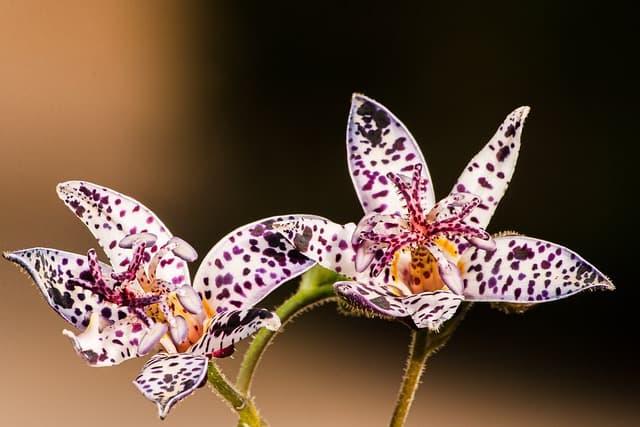
Adding a quirky charm to your shade garden, the Toad Lily (Tricyrtis spp.) offers stunning, exotic flowers resembling orchids. These resilient perennials thrive in shady areas with rich, well-drained soil.
Toad Lilies bloom from late summer to fall, providing crucial color when many other plants have already faded. Their height ranges from 1 to 3 feet, making them a great option for middle or back layers in your garden. They can tolerate moist soil conditions but also prefer good drainage. With their speckled flower patterns and unique growth habit, Toad Lilies add delightful diversity and intrigue to shade spaces.
Virginia Sweetspire
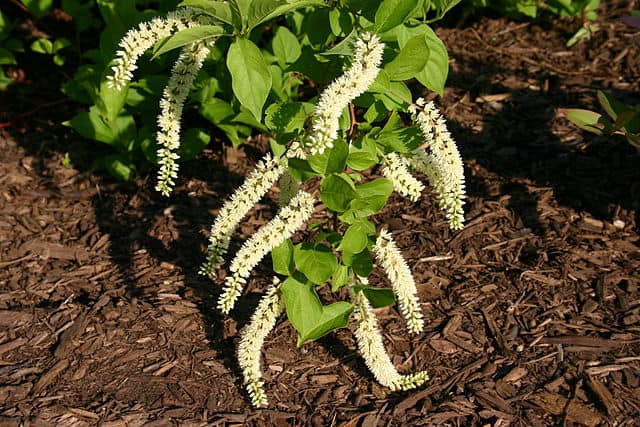
For a touch of elegance, Virginia Sweetspire (Itea virginica) brings lovely fragrance and stunning foliage to any shade garden. This deciduous shrub showcases delicate, raceme-shaped flowers in late spring, followed by striking fall colors.
Virginia Sweetspire thrives in moist, well-drained soil and prefers partial shade. It generally ranges from 3 to 5 feet in height, making it perfect for borders or as a specimen plant. Its cascading growth habit adds a graceful touch, while its tendency to attract pollinators brings additional life to the garden. Regular watering during dry spells will ensure healthy growth and luxuriant blooms.
Woodland Stonecrop
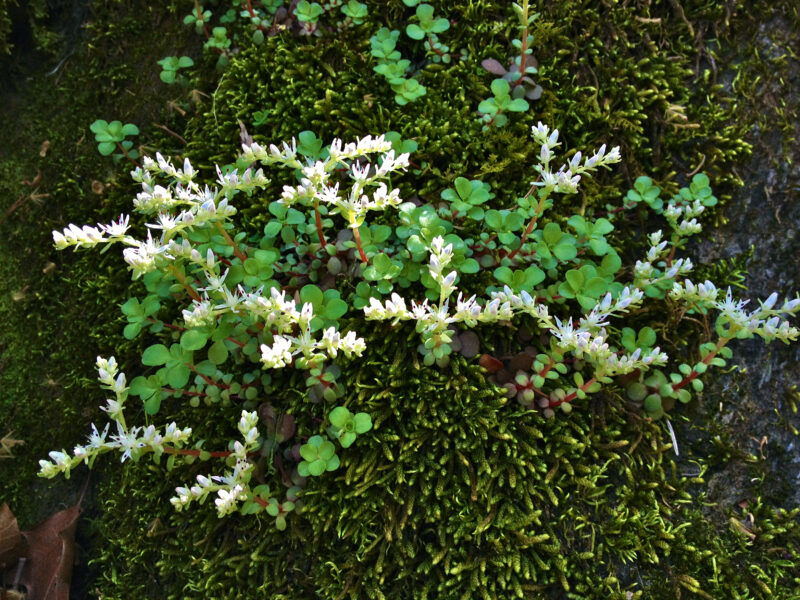
Lastly, Woodland Stonecrop (Sedum ternatum) is a fantastic low-growing succulent perennial perfect for adding texture and contrast in a shade garden. This hardy plant can tolerate varying conditions and enjoys well-drained soil.
Woodland Stonecrop produces clusters of tiny, star-like yellow flowers in late spring. With a height of just 6 to 12 inches, it works wonderfully as a ground cover. Its unique leaf formations add interest and can pleasantly contrast with broader-leaved plants, creating a delightful tapestry in your garden. Ensure adequate moisture as it establishes, and enjoy a delightful, easy-care perennial that appreciates shaded conditions.



